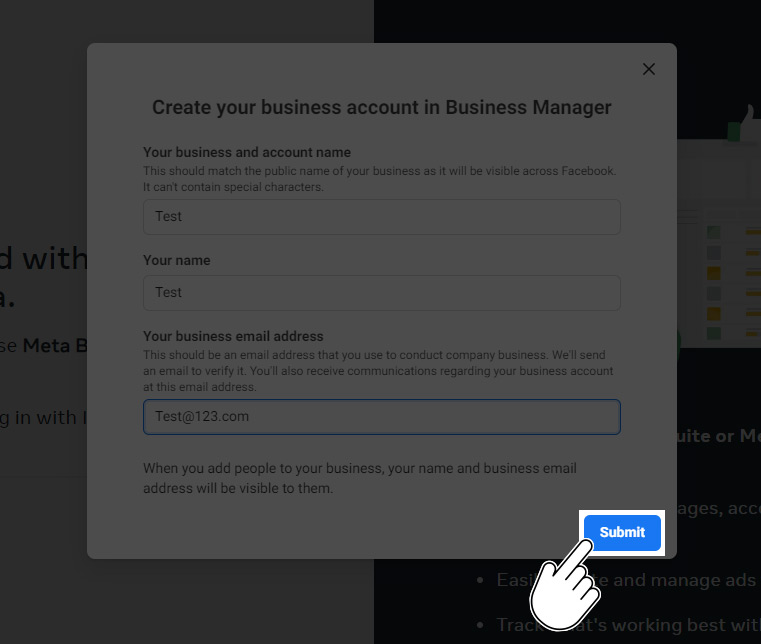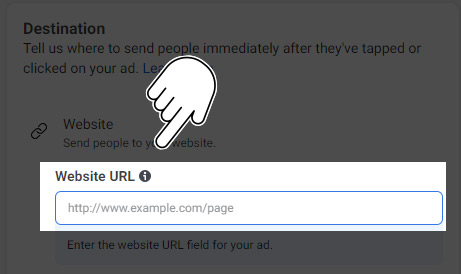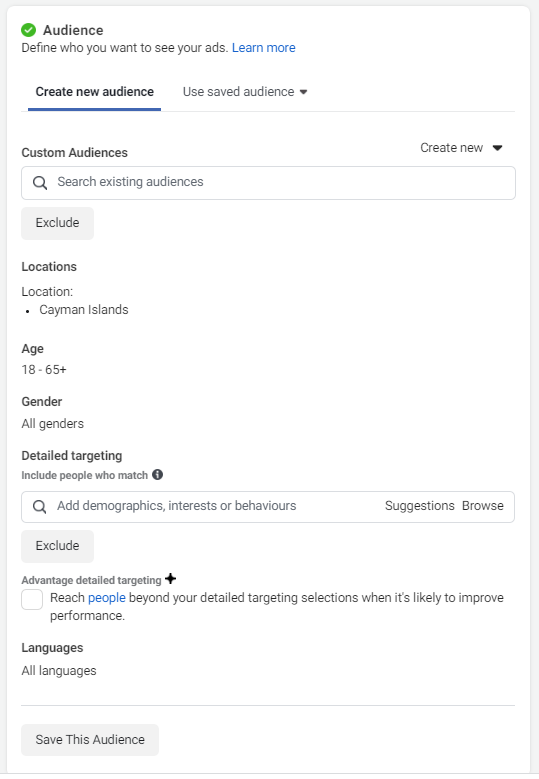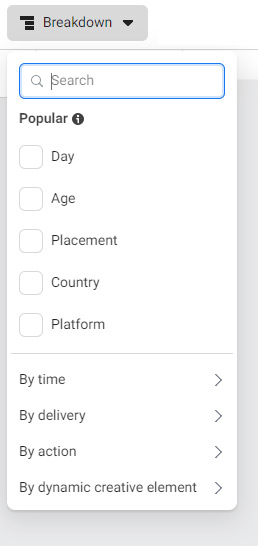Introduction
Imagine reaching millions of potential clients with just a few clicks. Envision a platform where you can flaunt your legal expertise, effortlessly build trust, and generate an influx of leads without draining your budget. Picture yourself driving your firm’s growth at an unprecedented pace.
Sounds like a daydream, doesn’t it? But hold on; it’s not mere imagination.
It’s possible with Facebook ads.
Facebook ads are one of the best ways to market your law firm online. They allow you to focus on your target audience based on location, demographics, interests, and behaviors. They also let you choose from different ad formats, such as images, videos, or carousel ads, to capture attention and drive action.
But creating successful Facebook ads for lawyers is not a cakewalk. You need to know how to write compelling ad copy, design eye-catching images, choose the right ad objective, and optimize your campaigns for maximum results.
Undeniably, Facebook ads are a powerful tool for growing your legal business. In this guide, we’ll walk you through the best practices for Facebook advertising, shared by experts who have mastered it. Whether new to Facebook ads or looking to enhance your existing strategies, this guide will help you get the most out of them.
Why Are Facebook Ads Important for Lawyers?
Facebook Ads have become an indispensable tool for lawyers and law firms looking to expand their online presence, reach a wider audience, and generate leads. With its extensive user base and robust targeting options, Facebook offers a powerful platform for legal professionals to showcase their expertise and attract potential clients. Read the various aspects of using Facebook Ads for lawyers and best practices.
-
Increased Visibility
Facebook boasts a massive user base, making it an ideal platform for lawyers to enhance their visibility. By running targeted ads, legal professionals can expose their services to a wide range of potential clients, including individuals who may not have been actively seeking legal assistance.
-
Precise Targeting
One of the most significant advantages of Facebook Ads is the ability to target specific demographics and interests. Lawyers can refine their audience by location, age, gender, profession, and even specific legal needs. This precise targeting ensures that ads are delivered to individuals more likely to require legal assistance, thus optimizing the ad spend and maximizing conversion rates.
-
Lead Generation
Facebook Ads provide lawyers with an excellent opportunity to generate leads. Lawyers can collect contact information from potential clients directly by utilizing lead generation forms within the platform. This enables them to follow up with these leads, nurture relationships, and convert them into actual clients.
-
Engaging Ad Formats
Facebook offers a variety of ad formats that lawyers can utilize to capture attention and engage with their target audience. These formats include image ads, video ads, carousel ads, and even interactive ad formats like polls or quizzes. Lawyers can convey their message effectively and create a lasting impact on viewers by choosing the correct format.
-
Content Marketing
Lawyers can leverage Facebook Ads as part of their content marketing strategy. Legal professionals can position themselves as thought leaders by promoting informative blog posts, articles, or videos and providing valuable insights to their audience. This approach helps build trust and credibility and encourages potential clients to engage with the lawyer’s brand.
-
Retargeting
Facebook Ads offer retargeting capabilities, allowing lawyers to re-engage with individuals who have previously interacted with their website or content. Yes, lawyers can increase the likelihood of conversion and reinforce their brand message by displaying relevant ads to these warm leads.
-
Tracking and Analytics
Facebook Ads provides comprehensive tracking and analytics tools to monitor the performance of campaigns. Lawyers can analyze critical metrics such as reach, engagement, click-through rates, and conversions. This data enables them to make data-driven decisions, optimize ads, and allocate their budget effectively.
How to Set Up Your Facebook Business Manager Account
Before creating and running your Facebook ads, you need to set up your Facebook Business Manager account. This tool helps you organize and manage your business assets, such as Pages, ad accounts, pixels, catalogs, and more. It also allows you to grant access and permissions to your team members, partners, or vendors without sharing your personal Facebook login details.
Follow these steps to set up your Facebook Business Manager account:
- Go to https://business.facebook.com/overview and click on the “Create Account” button.
- If you are not already logged in, log in to your Facebook account.
- Enter the business name, name, and email address you want to use for your Business Manager account. You may also need to provide your business details, such as address, phone number, and website.
- Click “Submit” and check your email for a confirmation message. You must verify your email address before accessing your Business Manager account.
- Congratulations! You have successfully created your Facebook Business Manager account. Now you can add your business assets and invite people to work with you.



For more information on how to use Facebook Business Manager, check out this guide from Meta: Here.
How to Choose Your Facebook Ad Objective and Budget
After setting up your Facebook Business Manager account, it’s time to create your Facebook ad campaigns. However, selecting your Facebook ad objective and budget is essential before creating campaigns.
Your Facebook ad objective defines the goal you want to achieve with your ads. It plays a crucial role in optimizing, delivering, and measuring the effectiveness of your ads. Choosing the right objective is vital to obtaining the best results for your business.
Facebook provides 11 different ad objectives, organized into three categories: awareness, consideration, and conversion. Each objective corresponds to a specific stage in the customer journey, from building brand awareness to driving action.
Let’s explore the 11 ad objectives and the outcomes they can help you achieve:
-
Brand awareness
Increase awareness of your brand among likely interested individuals.
-
Reach
Display your ads to the maximum number of people in your target audience.
-
Traffic
Drive more people to a particular destination, such as your website, app, or Messenger conversation.
-
Engagement
Encourage more people to interact with your posts, Page, event, or offer.
-
App installs
Prompt more people to install or utilize your app.
-
Video views
Garner more views for your video content.
-
Lead generation
Gather leads for your business or brand through forms on Facebook or Instagram.
-
Messages
Encourage more people to initiate conversations with your business on Messenger, WhatsApp, or Instagram Direct.
-
Conversions
Motivate more people to take valuable actions on your website, app, or Messenger conversation, such as purchasing or signing up for a newsletter.
-
Catalog sales
Showcase products from your catalog to individuals most likely to purchase them.
-
Store traffic
Drive more people to visit your physical store locations.
Read also: How a Digital Marketing Consultant Can Help You Build a Strong Online Brand
When choosing the optimal objective for your campaign, it’s essential to carefully consider your marketing goals, target audience, and the value you’re offering. For example, if your primary objective is to increase sales for your online store, the ‘Conversions’ objective would be the most effective choice.
On the other hand, if your goal is to generate buzz and excitement about an upcoming event, an ‘engagement’ objective would be a more appropriate choice. Understanding your needs will lead to a more successful and effective marketing campaign.
You can explore further information here to understand each objective better and determine the best fit for your campaign.
Once you’ve chosen your objective, it’s time to establish your budget. Your budget represents the amount of money you will allocate to your ads. You have the option to set either a daily budget or a lifetime budget for each campaign or ad set.
A daily budget represents the average amount you are prepared to spend on your daily ads. The spending may vary slightly based on audience size and ad delivery factors. A daily budget is suitable for ongoing campaigns that run indefinitely.
On the other hand, a lifetime budget indicates the total amount you are willing to spend on your ads throughout the entire duration of your campaign or ad set. Your spending will be optimized according to your schedule and delivery preferences. A lifetime budget is ideal for campaigns with fixed start and end dates.
When determining your budget, take into account factors such as:
- Your overall marketing budget and the portion you can allocate to Facebook ads.
- The goals of your campaign and the value of each desired outcome.
- The size and competitiveness of your target audience.
- The quality and relevance of your ads.
- Your expected return on ad spend (ROAS).
To estimate the cost of your upcoming Facebook ad campaign, you can utilize a free calculator here. This tool will help you plan your budget effectively.
You’ll be better positioned to achieve your marketing goals and maximize your campaigns’ effectiveness by carefully selecting your Facebook ad objective and budget.
Creating Your Facebook Ad Creative and Copy

Once you have selected your Facebook ad objective and determined your budget, the next crucial step is to craft compelling ad creative and copy. These elements, comprising visual and textual components, play a vital role in capturing your audience’s attention and persuading them to take action.
The Facebook ad format you choose will determine the specific requirements for your creative and copy. Facebook offers a variety of ad formats, including:
-
Image
Utilize a single image to showcase your product, service, or offer.
-
Video
Tell a story, demonstrate a feature, or showcase a testimonial through a single video.
-
Carousel
Present up to 10 images or videos highlighting different aspects of your product, service, or offer.
-
Collection
Create a captivating full-screen experience by combining an image or video with a product catalog.
-
Instant Experience
Provide an interactive, full-screen encounter that instantly loads when users tap on your ad.
-
Slideshow
Compile up to 10 images into a looping video with transitions and music.
-
Stories
Employ a vertical image or video that appears in people’s stories on Facebook, Instagram, or Messenger.
-
Messenger
Display an image or video in people’s Messenger inbox or sponsored messages.
-
Audience Network
Showcase an image or video on websites and apps beyond Facebook and Instagram.
When deciding on the most suitable ad format for your campaign, several factors should be considered, including:
- Your campaign objective and goals.
- Your target audience and their preferences.
- Your creative assets and available resources.
- Your message and value proposition.
- Your landing page and desired destination.
You can explore further information here to understand each ad format better and select the most appropriate one for your campaign.
Follow these step-by-step instructions to craft compelling Facebook ad creative and copy:
- Access Ads Manager and select the desired campaign or ad set for which you want to create an ad.
- Click on the Create button or choose an existing ad to make modifications.
- Choose an ad format from the options that align with your campaign objectives.
- If you select an ad format that supports Instant Experience, you can enhance it by adding an Instant Experience below your ad preview. You can use a pre-designed template or create a unique experience from scratch.
- Upload your media assets, such as images or videos, by clicking Add Media. You can use your assets or explore Meta’s free stock images and videos library. Additionally, you can create a captivating slideshow or utilize a video template from the available choices.
- Craft your ad copy by filling in the Primary Text, Headline, Description, and Display Link fields. The preview on the right side lets you visualize how your ad will appear across different placements. Furthermore, you can customize the text for each placement by selecting Edit Placements.
- Choose a call-to-action button from the options that align with your campaign objectives. This button will be prominently displayed on your ad, prompting users to take action. Sometimes, you can personalize the button text to suit your objectives better.
- Enter the appropriate website URL or app destination in the designated field. This is where users will be directed upon clicking on your ad. Ensure your landing page is relevant to your ad content and aligns with your campaign objectives.
- Review your ad thoroughly and ensure all elements are in order. You can use preview tools to visualize your ad’s appearance on various devices and placements. Additionally, you can turn specific placements on or off using the toggle feature.
- Click “Confirm” to publish your ad or select “Save as Draft” to retain it for future use.








Congratulations! You have successfully created your Facebook ad creative and copy. It’s time to closely monitor your ad performance and optimize it for better results.
Targeting Your Facebook Ad Audience and Placement
Once you have crafted your Facebook ad creative and copy, the next crucial step is effectively targeting your ad audience and placement. These settings are vital in determining who will see your ads and where they will be displayed.
Your Facebook ad audience refers to the specific group of individuals you aim to reach with your ads. You can define your audience based on various factors, including their location, demographics, interests, behaviors, and more.
Furthermore, you can leverage the power of custom and lookalike audiences to target individuals who have already engaged with your business or share similarities with your existing customers.
Equally important is your Facebook ad placement, which dictates the locations where your ads will appear. With a wide range of placement options available across Facebook, Instagram, Messenger, and Audience Network, you can strategically select the platforms that align with your advertising goals.
Alternatively, you can opt for Facebook’s automatic placement feature, which intelligently chooses the most suitable placements based on your objectives and budget.
Follow these step-by-step instructions to target your Facebook ad audience and placements effectively:
- Access Ads Manager and choose the campaign or ad set that requires editing or create a new one if necessary.
- Proceed to the Audience section, where you can construct your target audience. Consider utilizing the following options:

- Location: Specify the countries, regions, cities, or zip codes where you want your ads to be displayed. Additionally, you can exclude specific areas or apply radius targeting for enhanced precision.
- Age: Set the minimum and maximum age range of the individuals you intend to reach with your ads.
- Gender: Determine whether you want to target all genders, exclusively men or exclusively women.
- Languages: Choose the languages spoken by your target audience. You can leave this field blank if you aim to target individuals across all languages.
- Detailed targeting: Refine your audience by selecting specific interests, behaviors, or categories that align with your target audience. Additionally, you have the option to exclude individuals based on these criteria.
- Connections: Decide whether you want to target individuals who are connected or not connected to your Page, app, or event. You can even extend your reach to their friends.
- If you prefer using a custom or lookalike audience instead of creating a new one, click “Use a Saved Audience” and select the desired option from the dropdown menu. Furthermore, you can modify or fine-tune these audiences to align with your objectives better.
- Move to the Placements section and decide how your ads will be displayed. You can choose from the following options:

- Automatic placements: Allow Facebook’s algorithm to optimize ad placements based on your objectives and budget. This recommended option helps maximize your reach while lowering your costs.
- Manual placements: Take control and specifically select the placements where you want your ads to be displayed. You can choose or exclude placements across Facebook, Instagram, Messenger, and Audience Network. Furthermore, the Devices dropdown menu can narrow your placements to mobile or desktop devices.


Effective targeting of your audience and ad placement is critical when launching and monitoring your advertising campaigns on Facebook. This comprehensive approach ensures that your ads are seen by the right people in the right places, ultimately maximizing the impact and success of your advertising efforts.
Related Blog: The Ultimate Facebook Ads Conversion Guide for Beginners
Launching and Monitoring Your Facebook Ad Campaigns
Once you’ve determined your target audience and placement for your Facebook ads, it’s time to launch and monitor your campaigns effectively. Here, I’ll outline the essential steps to help you run your ads, monitor their performance, and optimize them for optimal outcomes.
Learn how to launch and effectively monitor your Facebook advertising campaigns with these informative steps.
- Access Ads Manager and choose the specific campaign or ad set you wish to launch or modify.
- Carefully review your campaign settings, including the objective, budget, schedule, audience, placement, creative elements, and copy. Ensure that all aspects align correctly with your objectives and goals.
- Click on the “Confirm” button to publish your campaign or ad set, or select “Save as Draft” if you want to save it for later. Additionally, the “Review and Publish” option allows you to review a summary of your changes before finalizing publication.
- Once your campaign or ad set goes live, utilize Ads Manager to monitor its performance. Explore various metrics and charts that provide valuable insights into the effectiveness of your ads, such as impressions, reach, clicks, conversions, cost, and ROAS (Return on Ad Spend).
- Utilize the Breakdown menu to understand how your ads perform across different dimensions, such as age, gender, device, placement, country, and more. This analysis enables you to identify which segments are outperforming or underperforming others.
- Leverage the flexibility of the Columns menu to customize the metrics and columns displayed in your reports. Choose from a range of presets or create custom columns to focus on the data most relevant to your objectives.
- Optimize your data analysis further by utilizing the Filters menu. Apply filters based on various criteria, including delivery status, objective, date range, etc. This targeted filtering lets you concentrate on the data that matters most to you, facilitating informed decision-making.
- Seamlessly export your data in CSV or Excel format using the Export button. Additionally, you can schedule recurring email reports, ensuring that you and your team receive the necessary insights regularly.
- Enhance your campaigns and achieve better results by utilizing various tools and features within Ads Manager, such as:

-
Duplicate
Duplicate campaigns or ad sets to create new ones with identical settings. This facilitates testing different variations of your ads or expanding your reach to new audiences.
-
Edit
Adjust your campaigns or ad sets anytime, allowing you to modify settings such as budget, schedule, audience, placement, creative elements, and copy. The Quick Creation tool streamlines the creation of new campaigns or ad sets for faster implementation.
-
Pause
Temporarily pause a campaign or ad set operation whenever necessary. This feature enables you to save money or prevent undesired outcomes. When you’re ready to restart, simply resume them accordingly.
-
Delete
Remove campaigns or ad sets from your account by deleting them entirely. This action stops their execution and frees up space in your account. However, deleting campaigns or ad sets erases all associated data and history.
-
Rules
Create automated rules that trigger specific actions based on predetermined conditions. For example, you can establish a rule that automatically pauses an ad set if its cost per result exceeds a specified amount. This saves you time, reduces manual errors, and optimizes ad performance.
-
Insights
Access valuable insights and recommendations that help improve your campaigns and ads. For instance, the Relevance Diagnostics tool assesses the relevance of your ads to your target audience, providing actionable suggestions for improvement.
-






By effectively launching and monitoring your Facebook ad campaigns, you can enjoy the fruitful results of your diligent efforts and expand your business’s online presence.
Best Practices for Facebook Ads for Lawyers

-
Define Your Objectives
Clearly define your goals and objectives before creating Facebook Ads. Whether lead generation, brand awareness, or driving traffic to your website, having a clear objective will help you design effective campaigns.
-
Target Audience Research
Conduct thorough research to understand your target audience’s demographics, interests, and pain points. This information will enable you to create compelling ad copy and choose relevant targeting options.
-
Compelling Ad Copy and Visuals
Craft engaging and persuasive ad copy that clearly communicates your unique selling proposition. Use high-quality visuals relevant to your legal services and resonate with your target audience.
-
Optimize Landing Pages
Ensure that the landing pages your ads direct to are optimized for conversion. Clear and concise messaging, intuitive navigation, and prominent contact forms can significantly enhance conversion rates.
-
Continuous Testing and Optimization
Test different ad variations, target audiences, and ad placements to identify the most effective combinations. Continuously monitor the performance of your ads and make data-driven optimizations to improve your results.
In short, Facebook Ads offer immense opportunities for lawyers to expand their online presence, attract potential clients, and generate leads. Legal professionals can leverage Facebook Ads to establish themselves as authoritative voices in their field and achieve their business objectives by implementing the best practices and utilizing the platform’s robust targeting and tracking capabilities.
Final Verdict
Now that you’ve learned how to utilize Facebook ads to grow your legal business online, you’re equipped with the knowledge to create and run powerful campaigns. By following the steps outlined in this guide, you can reach millions of potential clients, showcase your legal expertise, build trust, and generate leads.
However, it’s essential to recognize that successful Facebook ads for lawyers require ongoing effort. It’s a continuous process that demands testing, measuring, and optimizing to achieve the best results for your business.
That’s where we come in.
We are jaymehta.co, a team of Facebook advertising experts specializing in helping law firms expand their online presence and increase revenue. Our track record includes assisting numerous law firms like yours in achieving remarkable outcomes through Facebook ads, such as:
- Increasing website traffic by 200%
- Boosting lead generation by 400%
- Growing sales by 500%
- Improving ROAS by 600%
We can do the same for you. Whether new to Facebook advertising or seeking to enhance your efforts, we can elevate your legal business to the next level.
Don’t miss this opportunity to propel your law firm’s success rapidly. Contact Jay Mehta today to get started with Facebook ads.











